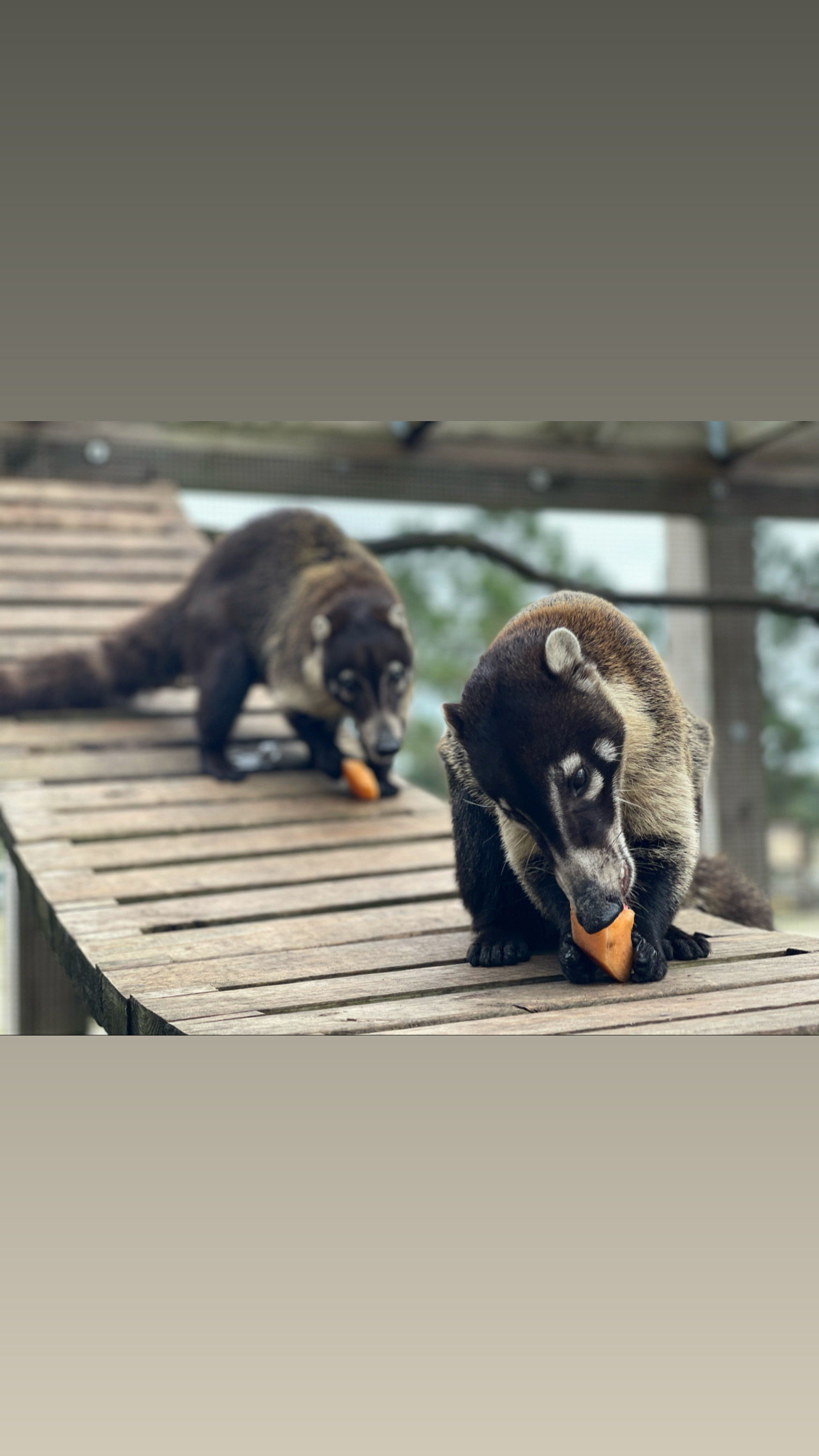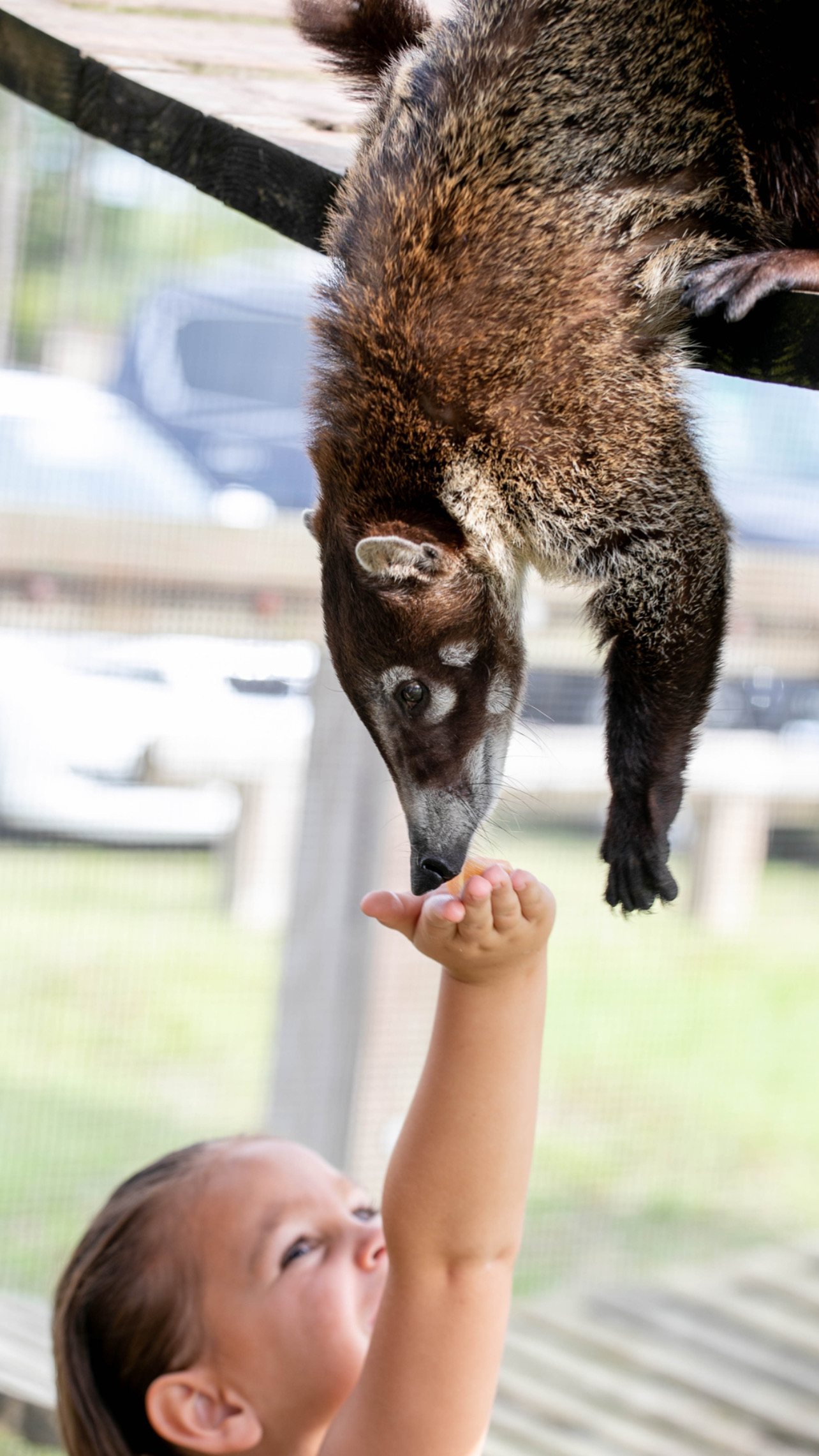Coatimundis, also known as coatis, are diurnal mammals native to South America, Central America, and the southwestern United States. They are raccoons that are related to both kinkajous and the North American raccoon.
These omnivores are known for their endless amounts of energy.


White-nosed coatimundis are small mammals native to North, Central and South America. They can be found from Arizona to Argentina. They have long, highly mobile snouts that are well adapted for foraging in crevices and holes for food. Their thick, semi-prehensile tails are used for balance and are often held erect above the body, oftentimes resembling a question mark.
The lifespan of a coati in the wild is generally 7-8 years. Whereas their lifespan in captivity averages 14 years.
White-nosed coatis are omnivores and eat a wide variety of foods. Invertebrates that are frequent to their diet are: beetles, ants, grubs, termites, scorpions, and spiders. They also eat other small animals, such as snakes, lizards, small rodents, and carrion, as well as nuts and fruits.
Females live in groups, called bands, along with their young, including males up to two years old. Adult males are solitary, except during the breeding season.
The coati’s gestation period is approximately 77 days and litters consist of two to seven young. The young are weaned at four months and reach adult size at 15 months.
The newborns open their eyes when they are 11 days old and are weaned after 4 months. After 5 months both the mother and young descend from the nest to rejoin their group.
Reproductive maturity of males is achieved at three years old and females by two years old, although both sexes reach full size at 15 months.
Coatimundis are extremely social animals that live in groups called bands or troops. Troops can consist of 3-20 coatimundis and are largely comprised of females and their offspring. Males are solitary except for a brief period during mating season.
Coatis communicate intentions or moods through chirping, grunting or snorting. They also use their tail as another way to communicate their location and find one another in dense ground cover.
The Coatimundi is a relative of the raccoon and has a long pointed muzzle and bushy ringed tail.
Coatis walk with their ringed tail held high which helps them with balance when climbing.
Coatis are arboreal and like to live above the ground.
Coatis are double jointed and extremely flexible which allows them to descend trees headfirst.
A group of coatis is called a band.
Coatimundis are diurnal, sleeping during the night they spend most of the day in search of food, grooming and resting.